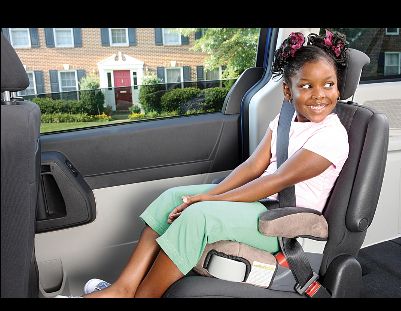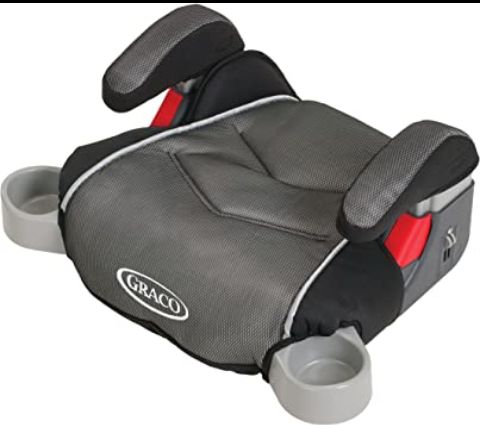High Back vs Backless Booster Seat: Which is Safer for Your Child?
In this article, we want to talk about High Back vs Backless Booster Seat: Which is Safer for Your Child? When it comes to car seats for your child, you have a choice of either the backless booster seat or the high back booster seat. Each type has its own pros and cons as well as safety considerations so which one should you choose? In case, you want to buy high back booster seats, See the 5 Best High Back Booster Seats for 6 Year Olds
A backless booster seat is a type of booster seat that provides an additional 5 inches of height for children who normally need to be in a higher car seat. The high back booster seats give the same 5 inches of height but also have a belt that goes around the child’s waist and secures them into the chair itself. Most parents who have kids get confused about which one will keep their kid safer, whether it’s High Back or Backless Booster Seat.
High Back Booster Seats

There are pros and cons to using a high back booster seat in your car. On the one hand, they provide more safety for your child than a traditional “backless” booster seat. They often have an extended back that looks like a car seat, but it can be removed for use as a traditional “backless” booster.
On the other hand, high back boosters are bulky and heavy, making them more difficult to remove from your car. They also tend to be more expensive than a regular “backless” booster seat.
Many parents would prefer not to invest in both a car seat and a high back booster because they are costly and don’t work well together. However, if you only have room for one or the other in your vehicle, then we recommend opting for the high back booster!
Read also:
- Can I Buy Insurance to Cover Bariatric Surgery?
- Can I Use Mupirocin Ointment on an Open Wound?
- 5 Best High Back Booster Seats for 6 Year Olds
- Why Is My Laptop Not Connecting to WiFi? [Solved]
Backless Booster Seats

Backless booster seats have been growing in popularity in recent years, as they offer a variety of benefits when compared to traditional high-back booster seats. For one, backless boosters are much lighter and take up less space in the car, making them more convenient to use. They are also typically less expensive than high-back booster seats.
Another advantage of backless boosters is that they can be used by children who are taller or older than average, whereas high-back boosters are better suited for younger children. Backless boosters may include features such as armrests and cup holders that standard boosters do not have.
One disadvantage of backless booster seats is that they can be more challenging to secure a seat belt with, as there is no guide for proper positioning like there is with high-back booster seats. It’s important to note that backless boosters should only be used for children who weigh the most out of all the passengers in the car.
Finally, it’s worth mentioning that while many parents find backless booster seats confusing at first, Joanne offers some valuable tips on her blog about choosing and using them safely (see link below).
High Back vs Backless Booster Seat: Which is Safer for Your Child?
What is the difference between a high back booster and backless booster?
There are two different types of booster seats: high back boosters and backless boosters. High-back boosters offer increased protection against injury in car crashes but must be used with cars without headrests or with low seat backs. Backless boosters are less expensive and can be used safely in vehicles with high seatbacks or headrests.
A backless booster is a seat for children between the ages of 4 and 8 years old. A high back booster is a car seat where the child sits on it, with no headrest. A booster position the vehicle’s safety belt properly on a child. A booster makes sure that the lap belt rests on the child’s lap, over their strong hip bones and nowhere near their soft belly. The high-back booster is designed to ensure that the shoulder belt rests between their neck and shoulder; whereas, the backless booster allows for more safety because it helps keep their head above the lap belt.
High Back Booster Seat vs Backless Booster Seat: Which is Best for Your Child?
When it comes to booster seats for your child, you have a few different options to choose from. You can go with a high back booster seat, or you can go with a backless booster seat. Both have their own set of pros and cons, which is why it can be difficult to decide which one is the best for your child.
High back boosters offer more safety features than backless boosters. They typically have thicker padding and more support than backless boosters, which makes them more comfortable for children of certain ages. They also tend to be heavier and less portable than backless boosters.
Backless boosters will still get a child to their proper height and weight limits, but they lack safety features and are less comfortable for children of certain ages. They are also lighter and more portable than high back boosters.
Before making your decision, it’s important to weigh the pros and cons of each product and consider what’s most important to you. Safety should always be a top priority when choosing any type of booster seat for your child, but comfort is also important – especially if your child will be using the seat for an extended period of time. Durability is another factor to consider, as both types of booster seats can be prone to wear and tear.
How do I choose a booster seat?
When it comes to booster seats, there are a few different types to choose from. But how do you know which one is right for your child? Here are a few things to keep in mind:
High-back boosters are designed to fit in vehicles with headrests or low seatbacks. They’re more expensive than backless boosters, but they should only be used if your car doesn’t have seat belts with built-in retractors.
Backless boosters can be used safely in high-backed vehicles because they don’t have a headrest, but they may also be used in vehicles without a headrest as well.
We recommend using complete high-backed car seats up to the height of 135cm or until children are over 12 years old. The seat and seat belt must be properly fitted each time you drive, as they don’t have backless boosters. People are Selling their Toes in Zimbabwe in exchange for dollar: Find out here who buys the toes and what They use them for.



